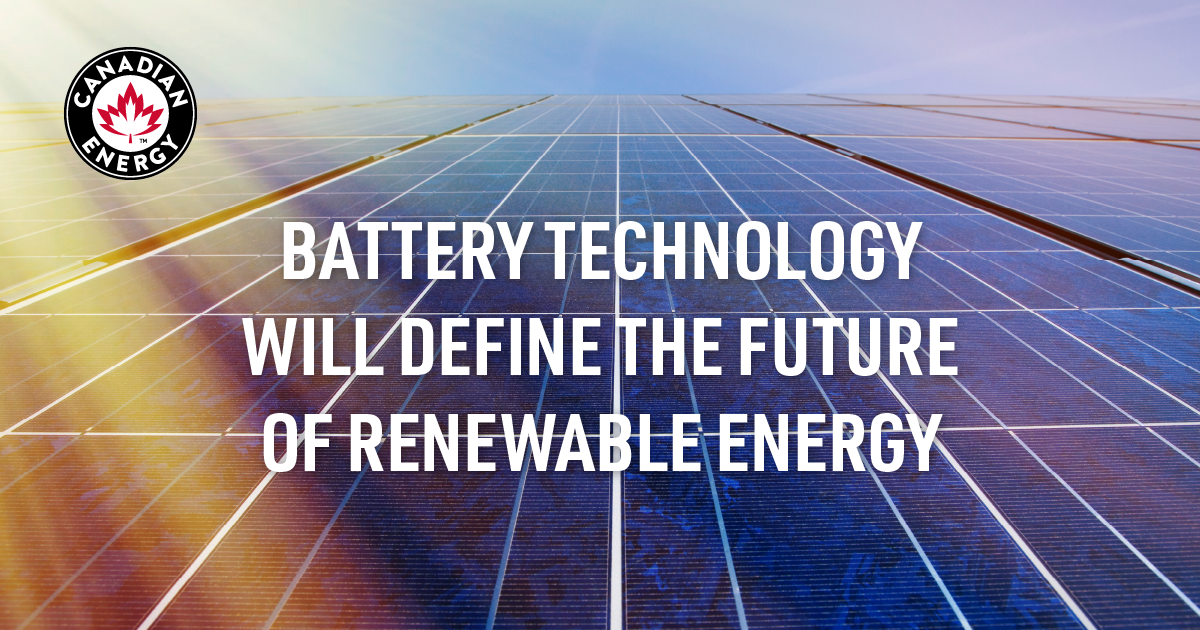Battery technology will define the future of renewable energy

Renewable energy, especially solar and wind power, is quickly becoming the dominant locus of new electricity generation investment. The Bloomberg 2017 New Energy Outlook predicts that $10.2 trillion will be spent on new power generation worldwide through 2040, and a massive 72 percent of this will be invested in new wind and solar plants. The broader availability of clean power is an encouraging development from both an environmental and an economic perspective. However, as energy markets accelerate along the transition from conventional to sustainable energy generation, there will be a growing problem that the industry must address.
The challenge is that a growing reliance on wind and solar energy can cause electrical grids to become unstable. Everyone can understand that the output of solar and wind farms naturally fluctuates due to cloud cover and wind speeds. As these intermittent sources of power grow in importance, so does the potential for damaging jolts to local and regional grids. Risks range from localized voltage drops that wreak havoc on modern electronic devices to blackouts of the kind that, in 2016, plunged almost all of South Australia into darkness for nearly 48 hours in some areas, an event that was followed by months of widespread power instability.
The traditional solution to this problem has been the maintenance of “spinning reserves” — a back-up network of fossil-fuel generators primarily designed to meet demand peaks. Ultimately, the more efficient solution lies in energy storage, particularly advanced battery technology. Batteries are the optimal means of balancing renewables-dominant grids because they can inject power into grids rapidly and in the precise amounts needed to interdict and smooth out fluctuations.
The main obstacles to the broad deployment of energy storage, of course, have been the high cost of the batteries themselves and the difficulties in obtaining enough of them to handle the needs within a utility grid. That is changing rapidly. Investments in technologies, supply chains and production facilities for Lithium Ion (Li-ion) batteries in particular have brought them to the point where a scalable solution exists.
As an example, when Puerto Rico began to rebuild its infrastructure after the devastation caused by Hurricane Maria last year, telecom operators struggled to sustain energy supplies to power their cell towers. After grid power was lost, backup diesel generators ran around the clock, quickly depleting on-site fuel supplies, and due to storm-related damage to roads and infrastructure, re-supply proved almost impossible.
Cell phone coverage was lost within days after the storm and not restored again for weeks. A portable, on-site hybrid energy system, combining a solar array, Li-ion batteries, a much smaller diesel engine and an intelligent control system to toggle between these three energy sources, could have powered Puerto Rico’s cell towers for as long as 100 days. That level of resilience and efficiency would have alleviated a significant burden during the continuing rebuilding process. One can imagine many other applications where portable hybrid energy technology would have paid enormous dividends: gas stations, clinics, schools, community centers and stores.
Battery storage is also becoming a go-to solution at grid scale. After an overambitious ramp-up of wind and solar power precipitated a grid collapse, South Australia’s government sought a balanced solution comprised of both additional spinning reserves and utility-scale batteries. Tesla has installed the world’s largest Li-ion battery farm there. Other companies and utilities have also begun to deploy Li-ion batteries to stabilize grids in the U.S., Europe and Asia.
For all the progress of the last few years, our industry has barely scratched the surface of the potential for utility-scale battery solutions. The future is bright, and it’ll undoubtedly be powered by renewable energy.
